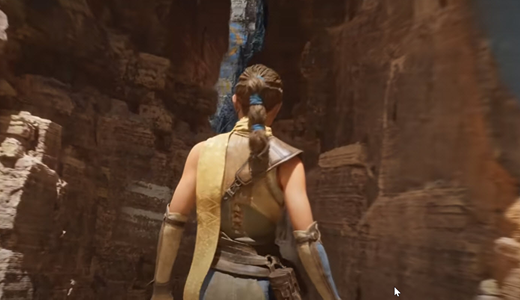If you look up the term “game engine,” you see it defined as the “basic software of a video game.” But in reality, it’s more. A game engine is much more like a place; a software-development space or environment where gamemakers build their games.
I start with that definition, because Epic games just revealed their new Unreal Engine 5 and demoed it in real-time on the upcoming PlayStation 5 game console that releases later this year. You can see by the demo clip below that the results are nothing short of incredible.
There’s a bunch of gaming jargon bantered about in the first few moments of this video, but stick around and you’ll get the sense of what this new game creator can do.
Sure, we’re getting used to the idea of movies having pretty life-like CGI, but game graphics, while realistic-seeming, have always been rather static. You could get a great image in a game, but it couldn’t move, it couldn’t breathe like living beings and living spaces do in real life. It all felt kinda plastic, even if you couldn’t pinpoint why.
The Unreal Engine 5 changes all that. And if you missed Epic’s explanations in the video, the big difference here has to do with two aspects of Unreal 5’s new graphics creation power. One of those is how it can work with millions and billions of teeny tiny image building blocks called “Nanites.” And the other important breakthrough is with something called “Lumen,” a new lighting system that reacts to changes in a given environment better than ever before—creating fluid images that shift realistically with light and shadow.
The tech will not only allow Epic games to look incredibly photo-realistic, but it will also open the door for independent gamemakers to create a startling in-game reality of their own, without having to literally go broke while doing so. In other words, this is a generational leap in tech that will change games as we know them.
Now, if you’re not a gamer, you might be thinking: Ho-hum, it’s got nothing to do with me. But that’s not exactly true.
If you’re a parent of a gamer, we don’t need to tell you how realistic games look now. This engine takes that realism to a new level. More realistic environments make for a more realistic, more immersive world … and the game’s content issues become more problematic, too.
But you don’t have to be playing Fortnite twelve hours a day to see how this tech could have ramifications elsewhere. Social media, advertising, news reports, school educational programs, business lectures, hey, even the emojis on your phone could soon be changing in some pretty startling and hyper-realistic ways through this kind of accessible tech.
Just think of the impact this could have when we get to the point where every created visual image we consume, every day, becomes nearly indistinguishable from reality. You certainly could call that … a game changer.






Recent Comments